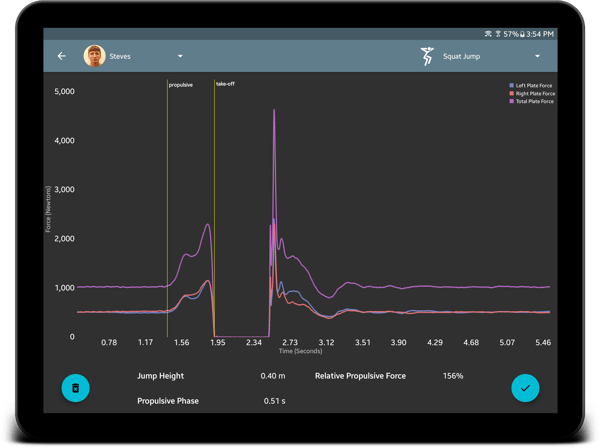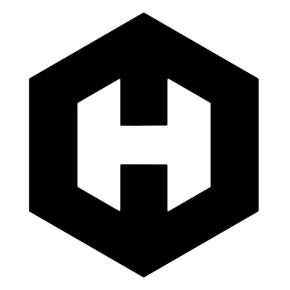Originally published on September 6th, 2018.
The Squat Jump test is a useful test for measuring concentric-only force application. Think of it this way – a power forward in Basketball will use an eccentric-concentric combination to jump for a rebound under the basket, while an offensive lineman will largely only use concentric contractions to propel himself forward from a “set” position. When the eccentric phase of a movement is removed, how well can an athlete perform? Often, the squat jump test is used in conjunction with the countermovement test in order to answer this question.
Like the CMJ test, a Squat Jump (SJ) consists of the same performance metric (jump height) and descriptors indicative of how the athlete achieved the result, although it is often much simpler in terms of the distinct phases involved. Since there is only a concentric phase, we don’t have the opportunity to examine the relationship between the eccentric and concentric phases—nonetheless, it is still useful for measuring how much propulsive force an athlete can produce. Additionally, the SJ test can oftentimes be more difficult for athletes to master. A CMJ comes naturally to most athletes, but an SJ, in contrast, can be difficult on the first try. Most often, we see athletes adding a countermovement before the jump, rather than going right into the propulsive phase – this should cause the test to fail as it is not an actual squat jump.

Test Protocol
- Athlete steps onto the force plates
- Athlete gets into a squatting position and holds steady
- On cue, the athlete engages his or her leg muscles and explodes upwards, without any countermovement
- The athlete should stick the landing on the force plates and wait until the test is completed]

Tips for Best Results
- A clean quiet phase before the jump is initiated is essential to collecting solid data.
- Make sure the athlete holds as still as possible before beginning the SJ movement
- One of the hardest parts of the SJ test for athletes to grasp is its pure concentric nature.
- It may take a few tries before an athlete is able to perform the test correctly.
- Cue the athlete after a failed test by reminding them to fire their glutes to initiate the jump. There should be no downward movement (countermovement), as we are looking at concentric recruitment exclusively.
- Consistent hand placement.
- For the CMJ this point is more important, as it can cause errors and change the results in a more pronounced manner.
- For SJ testing, it is recommended that the athlete keeps hands on hips and that the protocol remains consistent
- Alternatively, an athlete can keep the hands by his or her side, and then “punch” upward during the jump.
- Warning—in our experience, any hand movement during an SJ test is more likely to produce a countermovement and cause the test to fail.
- Stick the landing
- After the athlete lands, it is recommended that they stick the landing so that time to stabilization and landing stiffness (among other things) may be calculated. If the athlete does not stick the landing the test will still pass, but some metrics will not be calculated.
Phases of the SJ
A standard squat jump contains 4 distinct phases.
- The Quiet Phase
- Just as it sounds, the quiet phase takes place before the jump begins and is when system weight is determined
- The quiet phase is extremely important, as most of the post-test calculations take system weight into account.
- The Propulsive Phase
- Since the SJ test is a concentric-only test, from the quiet phase we move directly into the propulsive phase.
- This is the phase when the athlete is pushing down against the force plate to propel him/herself upwards into the air.
- The Flight Phase
- The Flight phase begins when the athlete leaves the plates and is "airborne."
- The Landing Phase
- The Landing phase begins when the athletes return to the plate after jumping.
-2.png?width=156&height=60&name=Hawkin%20Logo%20(2)-2.png)
-1.png?width=155&height=60&name=WHITE.Horizontal_Logo.Transparent%20(3)-1.png)

